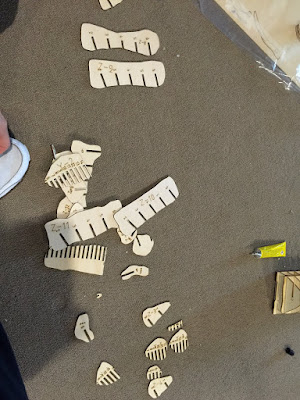Aluminium Skin Finish
 |
| Blue cutter machine |
After the previous two approaches, i found out that it is better to do the half shape of the template rather than doing the whole part of the body due to restrictions like the tool and model size.
Therefore, the third time approach began. This time, i will just do the left half part of the model. Firstly, draw the dog on the sheet (draw 4cm thicker than the original dog size) and then cut the aluminium sheet into appropriate size. Then, use the blue cutter to cut the sheet roughly.
 |
| Hand cutter |
Next, use the hand cutter to cut the corner precisely and use the rasp to polish the edge of the sheet in order to make the edge smoother.
 |
| Contour lines to indicate the areas |
Next step is to remove the blue coloured protector and start to tap the dog inwardly curved a bit. Circle and draw the area with contour lines that need to be concave and use the hammers to tap it. With different purpose of tapping, various hammers and metal tool need to chosen carefully.
For example, the pictures below to show different types of hammer, the left one shows that the hammer that suits for smaller area and which could cause deeper mark. The yellow one in the middle shows that the hammer could make flat mark and suits for smaller area.
 |
| Different types of hammer |
The next step is to tap the area that have been circled according to the 3D template. The middle part of the body and the area that between the neck and mouth needed to be concave according to the curve of the 3D template. Therefore, the pictures above showed the process of that.
 |
| Aluminium Skin look from bottom |
 |
| Aluminium Skin look from side |
Lastly, the edges of aluminium sheet needed to be tapped much more inwardly curved if it is too long. Finally, after several times of experiments, the aluminium skin of the dog decoration is done!
(Tips: Carefully to choose the machines and tools, they might save you a lot of time.)





















